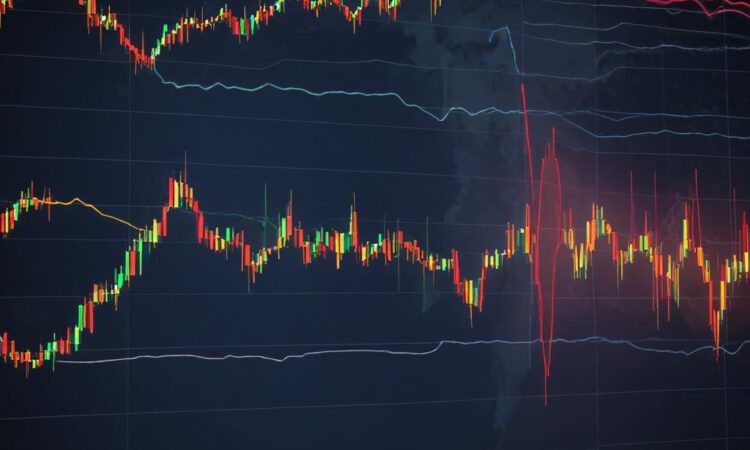Emerging Market Vulnerabilities and Capital Flows
Emerging market economies are facing increased vulnerabilities due to a confluence of factors, creating a complex and challenging landscape for policymakers and investors alike. The interconnectedness of the global financial system means that events in one region can quickly ripple across borders, amplifying both positive and negative effects. Understanding the current dynamics is crucial for navigating the uncertainties ahead.
Rising Interest Rates in Advanced Economies
The aggressive monetary tightening policies adopted by advanced economies, particularly the United States, to combat inflation have had significant repercussions for emerging markets. Higher interest rates in the US make dollar-denominated assets more attractive to investors, leading to capital outflows from emerging markets. This capital flight can put pressure on emerging market currencies, leading to depreciation and increasing the cost of servicing dollar-denominated debt. Many emerging market countries have significant external debt, and a weaker currency makes it more expensive to repay these debts, potentially leading to debt distress and sovereign defaults. The impact varies depending on the specific country’s economic fundamentals, debt levels, and the composition of its external debt.
Furthermore, the rising interest rates increase borrowing costs for emerging market governments and corporations, hindering investment and economic growth. This creates a vicious cycle: slower growth leads to reduced investor confidence, further fueling capital outflows and exacerbating the economic downturn. The speed and magnitude of interest rate hikes in advanced economies are crucial factors influencing the vulnerability of emerging markets.
The Strong US Dollar
The strength of the US dollar, closely linked to rising US interest rates, further complicates the situation for emerging markets. A strong dollar makes imports more expensive for emerging market countries, contributing to inflation and potentially eroding purchasing power. Moreover, it makes it more difficult for these countries to repay their dollar-denominated debt, further straining their finances. The impact of a strong dollar is particularly severe for countries with large dollar-denominated debts or significant reliance on dollar-denominated imports.
The appreciation of the dollar also affects commodity prices, as many commodities are traded in dollars. A strong dollar can lead to lower commodity prices, hurting the export revenues of emerging market countries that are heavily reliant on commodity exports. This decline in export earnings can exacerbate their balance of payments problems and further contribute to economic instability.
Global Uncertainty
The global economic outlook remains uncertain, with various geopolitical risks and economic headwinds adding to the vulnerabilities of emerging markets. The ongoing war in Ukraine, persistent supply chain disruptions, and the potential for further inflation shocks all contribute to a climate of uncertainty that discourages investment and increases risk premiums for emerging market assets. This uncertainty can trigger sudden capital outflows as investors seek safer havens for their investments.
The lack of predictability makes it difficult for emerging market governments to plan and implement effective economic policies. The unpredictable nature of global events means that even well-managed economies can be significantly impacted by unforeseen circumstances, highlighting the need for robust contingency planning and international cooperation.
Shifting Capital Flows
The combination of rising interest rates, a strong dollar, and global uncertainty has led to a significant shift in capital flows. Investors are increasingly moving their funds away from emerging markets and towards safer assets in advanced economies. This capital flight can destabilize emerging market economies, leading to currency depreciations, higher inflation, and increased financial instability. The speed and scale of these capital flows can be particularly impactful, sometimes leading to sudden and sharp market corrections.
The impact of shifting capital flows is not uniform across all emerging markets. Countries with stronger macroeconomic fundamentals, sound fiscal policies, and ample foreign exchange reserves are generally better equipped to weather these storms. However, countries with weaker institutions, high levels of debt, and limited reserves are particularly vulnerable to capital flight and the resulting economic consequences.
International Organizations and Support
International organizations like the International Monetary Fund (IMF) and the World Bank are closely monitoring these developments and providing support to vulnerable countries. The IMF offers financial assistance and policy advice to help countries stabilize their economies and address balance of payments problems. The World Bank provides funding for development projects and helps countries build stronger institutions and improve their macroeconomic management.
These organizations play a crucial role in mitigating the impact of global economic shocks on emerging markets. Their support is essential in helping vulnerable countries navigate the challenges of rising interest rates, a strong dollar, and global uncertainty. International cooperation and coordinated policy responses are vital for promoting global stability and preventing a broader financial crisis.
Conclusion
The current global economic environment poses significant challenges for emerging market economies. Rising interest rates in advanced economies, a strong US dollar, and global uncertainty are creating a perfect storm that is putting pressure on these markets. Capital flows are shifting, potentially exacerbating financial instability in some regions. While international organizations are playing an important role in providing support, the situation requires careful monitoring and proactive policy responses from both emerging market governments and international institutions. The interconnectedness of the global financial system necessitates a coordinated international approach to mitigate risks and promote sustainable economic growth in emerging markets.
The need for diversified economies, robust regulatory frameworks, and responsible debt management practices in emerging markets cannot be overstated. Long-term sustainable development requires a multifaceted approach addressing both immediate vulnerabilities and structural weaknesses. A collaborative effort involving international cooperation, sound domestic policies, and proactive risk management is crucial for navigating the current challenges and fostering sustainable and inclusive growth in emerging markets.
The future trajectory will depend significantly on the evolution of global macroeconomic conditions, policy responses, and the ability of emerging market economies to adapt to the changing landscape. Continued vigilance and proactive measures are essential to ensure stability and promote sustainable development in these crucial economies.

